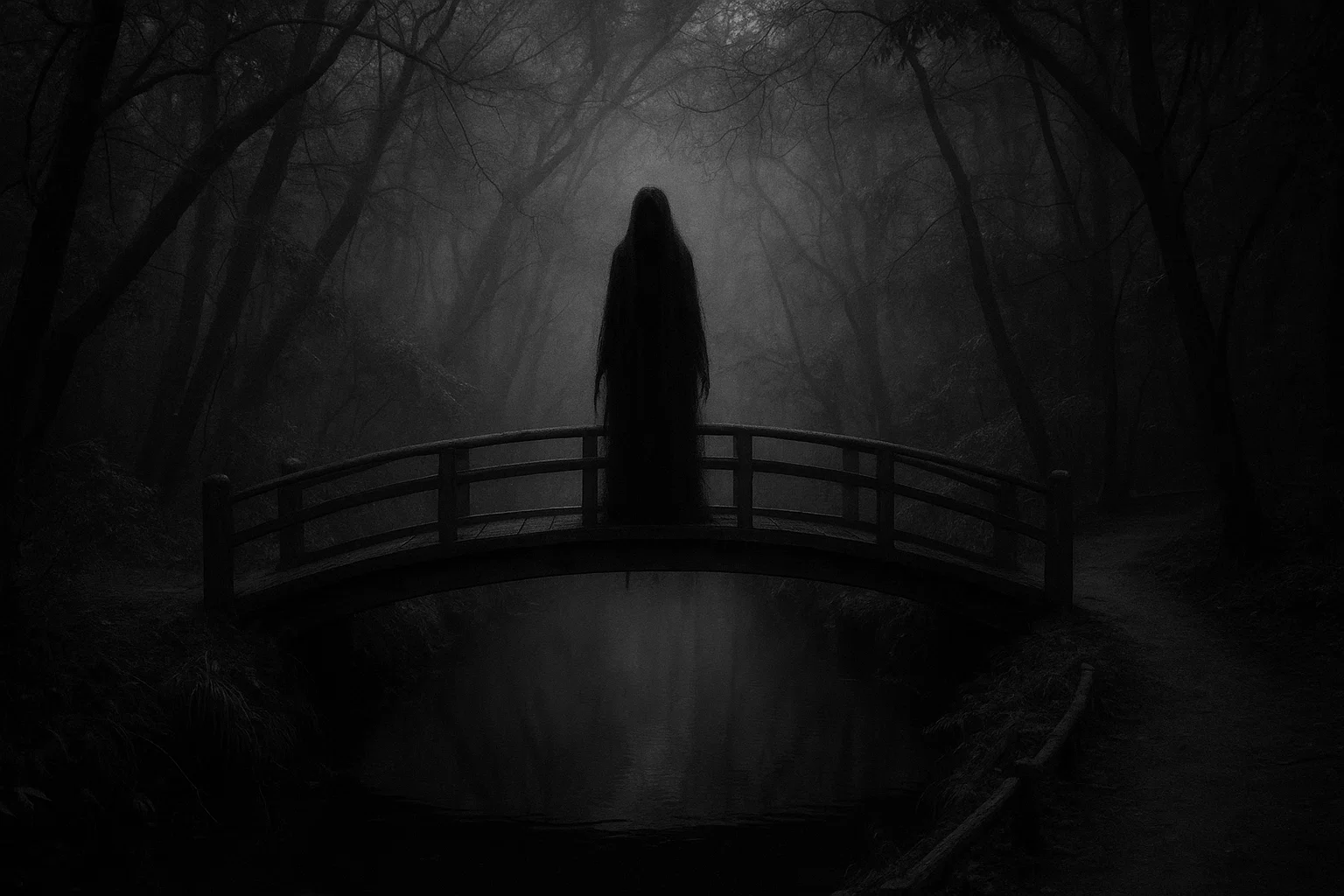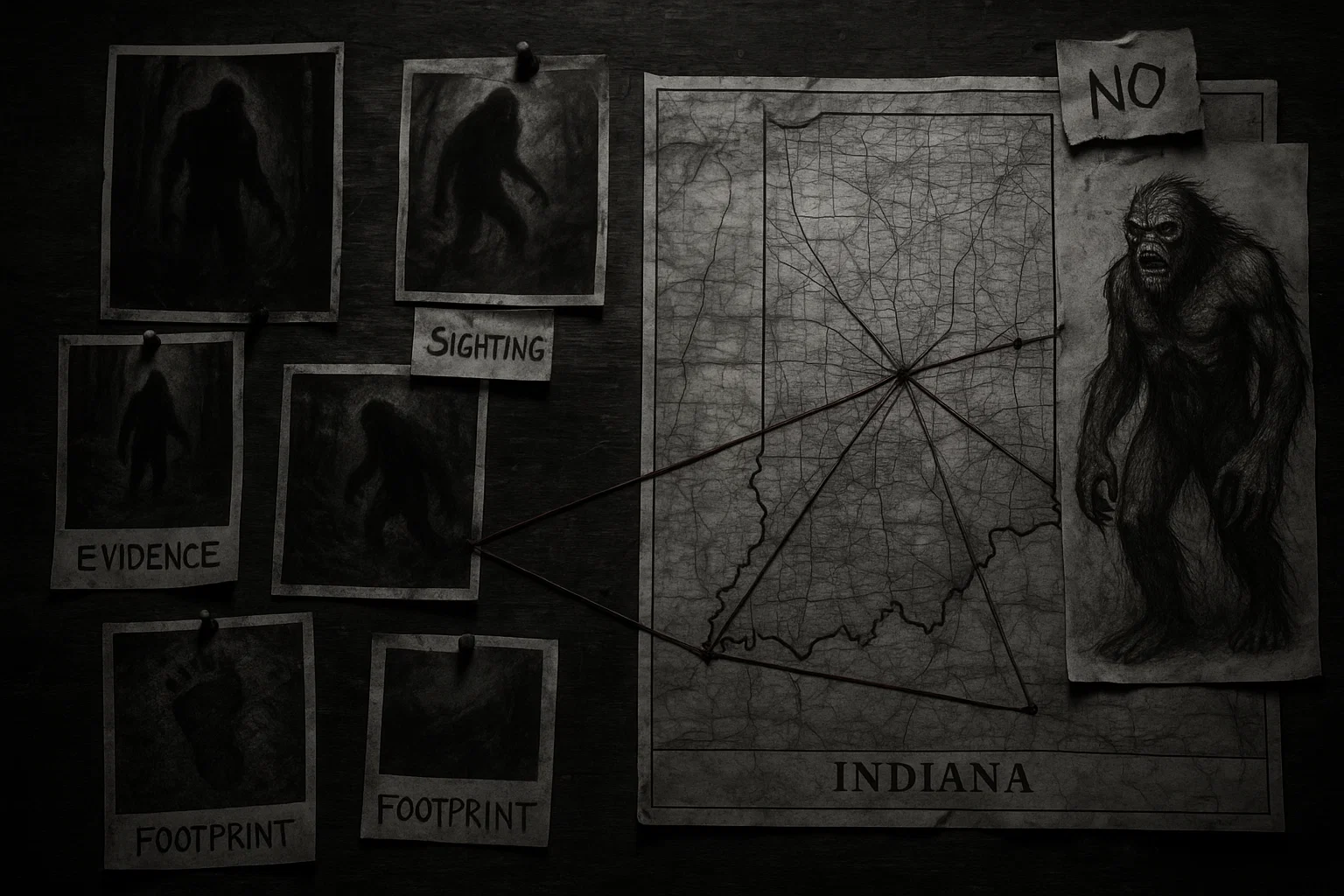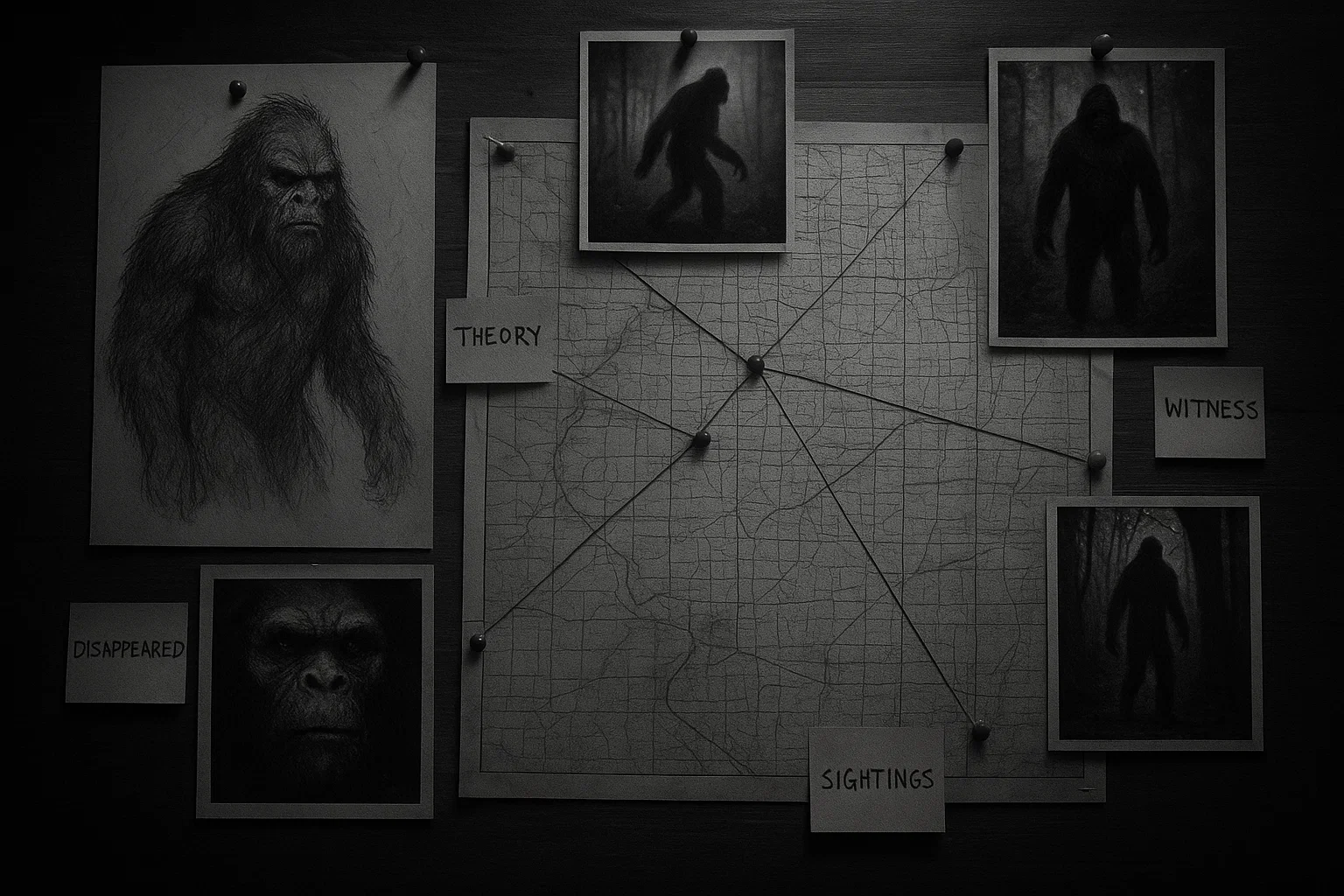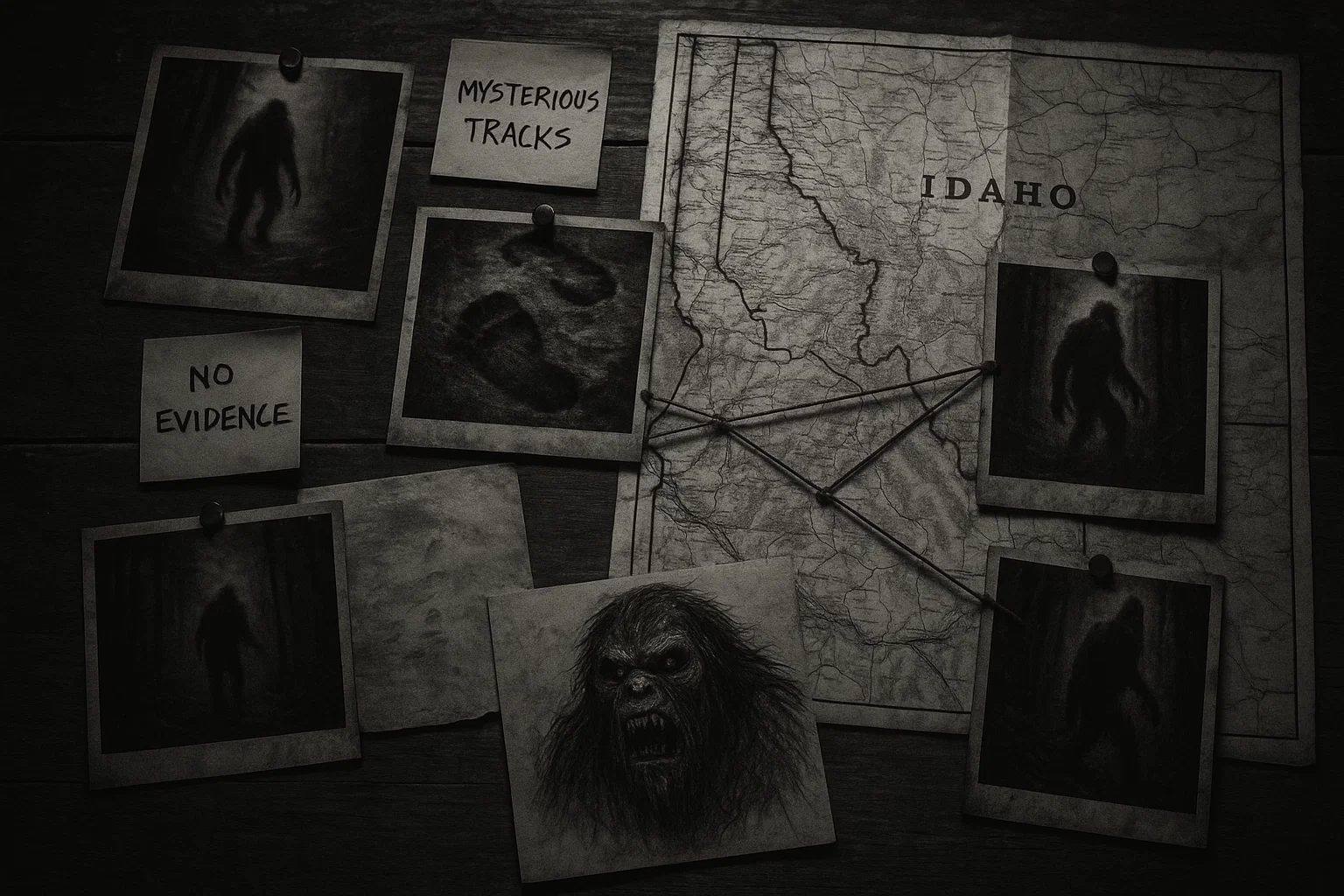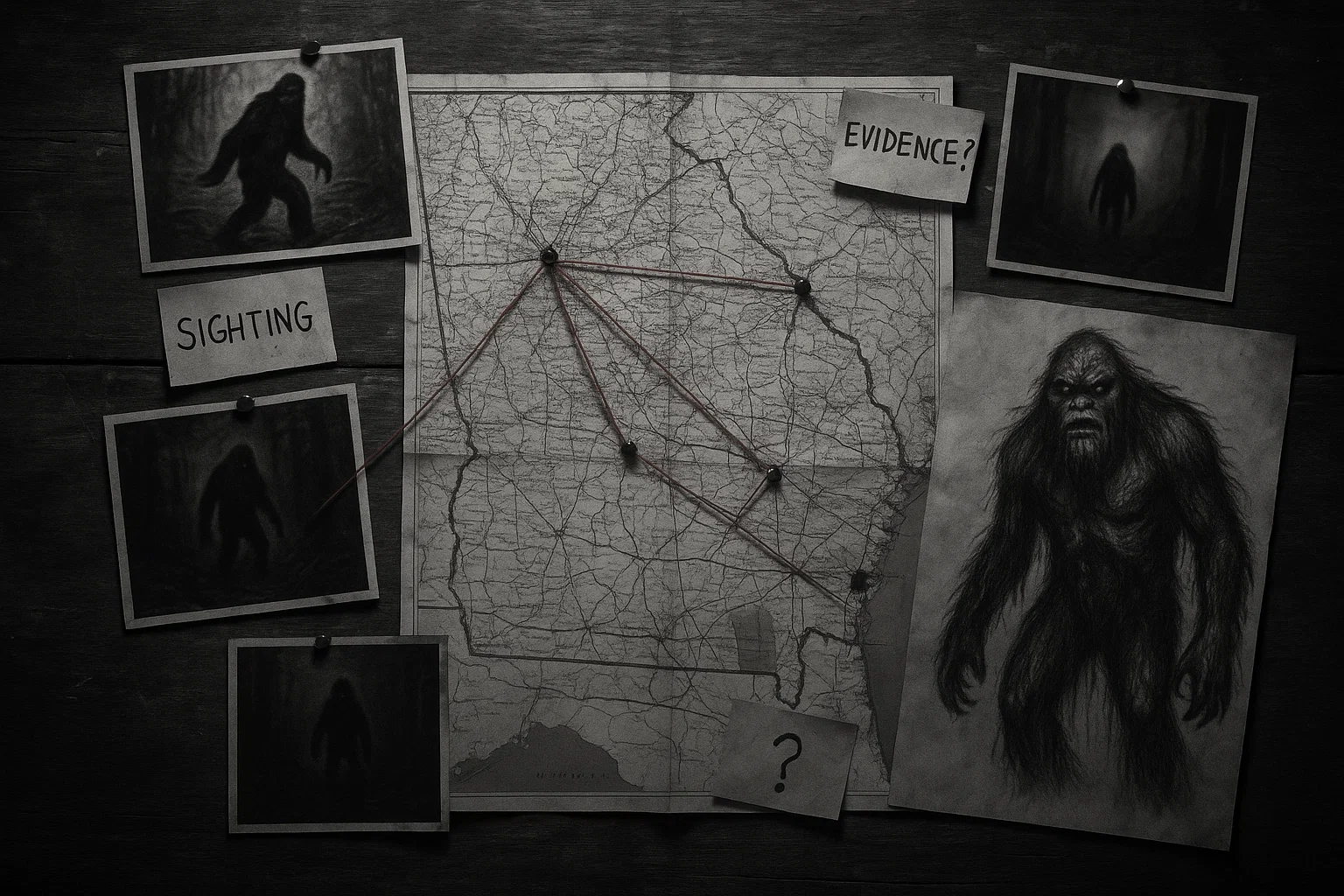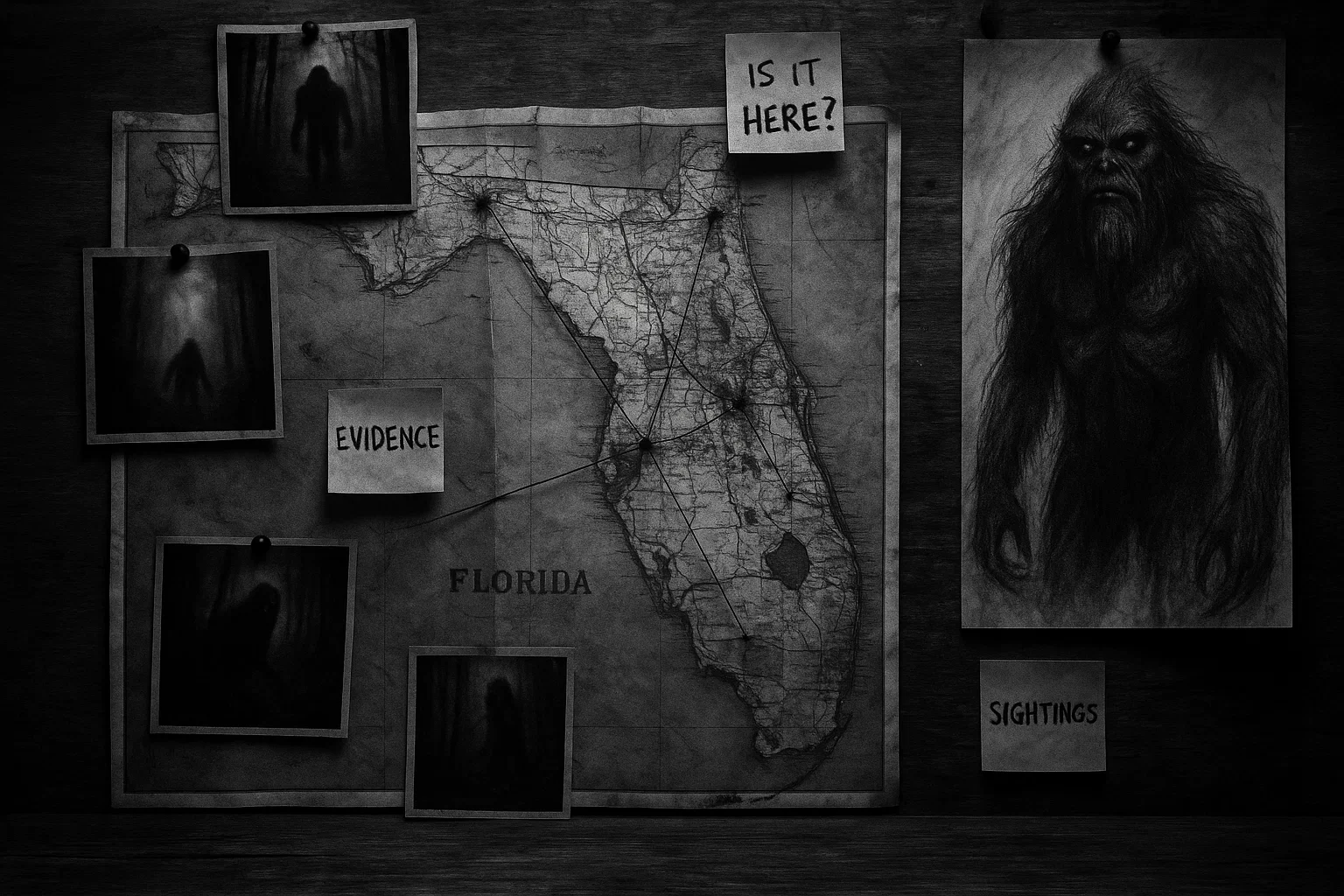Inokashira Park sits in Tokyo’s vibrant west. It’s a serene escape. Cherry blossoms, Inokashira Pond, and Ghibli Museum draw crowds.
Yet, a chilling urban legend haunts this oasis: the Inokashira Park curse. This folklore warns couples rowing on the pond face doomed romances. The curse stems from Benzaiten, Shinto goddess of water, music, and wisdom.
Her shrine looms over the lake. This myth weaves superstition, romance, and mystery. It lures visitors curious about haunted Tokyo and ghostly tales.
Table of Contents
What Is the Inokashira Park Curse?
The Inokashira Park curse is a famous urban legend in Tokyo, Japan, claiming that couples who ride boats—whether swan-shaped pedal boats or traditional rowboats—on Inokashira Pond will soon part ways.
The curse is linked to Benzaiten, a Shinto goddess revered for her dominion over water, music, wisdom, and beauty, who is also known as a protector of sacred spaces. Her shrine, located on a small island accessible by a red bridge in the pond, is believed to be the source of this supernatural phenomenon.
According to legend, Benzaiten grows jealous of couples displaying their love on her sacred lake, cursing their relationships to end in heartbreak. This tale, believed to have persisted for over 200 years, serves as a cautionary warning for lovers, adding an element of mystery to the park’s serene ambiance.
The curse’s origins are deeply rooted in Shinto beliefs, where Benzaiten, originally derived from the Hindu goddess Sarasvati, is worshipped by musicians, artists, and scholars.
Her association with water makes the pond’s role in the curse particularly significant. While no definitive evidence supports the curse, its cultural impact is undeniable, with many visitors avoiding boat rides to safeguard their relationships.
The legend’s persistence highlights the power of folklore in shaping behavior and perceptions of love, making it a captivating aspect of Tokyo’s cultural landscape.
You May Also Like: Ghost Taxi Passengers of Japan: Real Hauntings After the 2011 Tsunami?
Inokashira Park Haunted History
Inokashira Park, opened on May 1, 1917, as Inokashira Onshi Kōen, holds the distinction of being Japan’s first suburban park.
Its name, meaning “head of the well,” reflects its historical role as the primary water source for the Kanda River, established during the Edo period (1603–1868).
The park was a gift from the Emperor to the public in 1913, symbolizing its cultural significance. Inokashira Pond, stretching across the park, feeds the Kanda River and is surrounded by approximately 500 cherry blossom trees, making it a prime spot for hanami.
The spiritual heart of the park is the Benzaiten shrine, a small but historically significant structure dating back to the Heian period (794–1185).
Historical records indicate that Minamoto no Tsunemoto installed a Benzaiten statue in the shrine during the Tengyō era (938–946), crafted by Dengyō Daishi, the founder of Tendai Buddhism.
The shrine fell into disrepair by the early Edo period but was restored by Tokugawa Iemitsu, the third shogun, in the 17th century.
The statue of Benzaiten, depicted with eight arms and considered a hibutsu (hidden Buddha), is shown to the public only once every 12 years, with the next viewing scheduled for 2025.
The shrine’s vibrant red architecture and surrounding statues, including guardian dogs from 1771 and an Ugami statue from 1699, enhance its mystical aura.
Despite its beauty, the park has a grim past marked by tragedies that fuel its haunted reputation.
The most notorious incident is the Inokashira Park dismemberment case of April 23, 1994. A cleaner discovered a plastic bag in a trash can containing human remains, leading to the recovery of 27 body parts across seven bins.
The victim, Seiichi Kawamura, a 35-year-old architect and member of an unidentified religious organization, was dismembered with surgical precision using an electric saw and a blunt knife.
The cuts, made into 20-centimeter pieces, ignored joints and showed no signs of battery, suggesting expertise. The head, chest, and genitals were never found, possibly collected by janitorial workers before discovery.
Witnesses reported seeing two men with bags in the park at 4:00 AM and another saw a man resembling Kawamura being beaten near a Kichijoji store. The case, which expired in 2009, remains unsolved and bears eerie similarities to the 1992 video game Shin Megami Tensei, deepening the park’s dark lore.
Other incidents have further darkened the park’s history:
- 1955: A group of teenagers reported seeing hitodama (ghostly orbs) near the pond at night, fleeing in terror.
- 1968: A hit-and-run near the park killed Yoshio Nakamura, 42, with the driver never apprehended.
- 1972: Keiko Mori claimed to hear unexplained screams near the Benzaiten shrine at dusk.
- 1975: A fire near the shrine scorched nearby woods, sparking supernatural rumors.
- 1983: Teenager Ryoichi Endo, 16, fell from a tree, surviving with severe disabilities.
- 2001: Mika Takahashi, 24, drowned when her boat capsized during a storm, with locals attributing it to the curse.
- 2010: Hiroki Sato, 29, was found hanged in a wooded area, rumored to have broken up with his partner after a boat ride.
Inokashira Park Curse Manifestations
The Inokashira Park curse lacks hard proof. Yet, tales of broken romances persist. Most accounts are anecdotal, shared via folklore, media, or gossip:
Circa 1810: The Origin Story
During the late Edo period (1603–1868), Inokashira Park was a cherished retreat for locals, especially during the hanami season, when cherry blossoms transformed the landscape into a sea of pink.
Around 1810, Hiroshi Tanaka and Aiko Yamada, a young couple betrothed to be married, visited the park for a romantic outing. They rented a small wooden rowboat, gliding across Inokashira Pond as sakura petals floated on the water’s surface.
The couple laughed and shared dreams of their future, unaware of the ominous legend that would soon envelop them.
As they reached the pond’s center, near the Benzaiten shrine’s island, an inexplicable tension arose. Hiroshi, known for his calm demeanor, grew irritable, snapping at Aiko over trivial matters.
Confused and hurt, Aiko tried to salvage the moment, but their conversation escalated into a heated argument. By the time they returned to shore, their joy had evaporated. Within days, they called off their engagement, leaving Aiko heartbroken and bewildered.
Seeking solace, Aiko returned to the park alone, wandering near the pond. She stumbled upon the Benzaiten shrine, its red torii gate stark against the greenery.
As she prayed for answers, a chilling sensation washed over her, as if the goddess herself was watching. Locals later shared tales of Benzaiten’s jealousy, warning that the goddess cursed couples who displayed affection on her sacred lake.
You May Also Like: Curse of the Colonel Sanders: Coincidence or Real Haunting?
1985: Newlywed Heartbreak
In the vibrant 1980s, during Japan’s economic boom, Kenji and Yumi Sato, newlyweds filled with hope, visited Inokashira Park to celebrate their marriage.
Despite friends’ warnings about the Inokashira Park curse, they dismissed it as mere superstition, eager to enjoy the romantic setting.
On June 12, 1985, they rented a swan-shaped pedal boat, giggling as they navigated the pond under a clear sky. The day seemed perfect, with a gentle breeze and the distant hum of park visitors.
However, as they pedaled further from shore, Kenji began to feel uneasy, later describing a sensation of being watched by unseen eyes. Yumi, too, sensed a subtle discomfort but brushed it off.
By the time they returned the boat, their mood had shifted. Kenji became withdrawn, snapping at Yumi over minor issues.
Over the next two weeks, their relationship deteriorated rapidly. Yumi, unable to understand her husband’s sudden moodiness, filed for divorce on June 26, just 14 days after their boat ride.
The divorce was finalized in 1986, and their story was covered by a Tokyo newspaper, reigniting local interest in the curse. Many attributed their breakup to Benzaiten’s wrath, claiming the goddess had claimed another couple’s happiness.
2003: College Couple’s Collapse
In 2003, Takashi Mori and Emi Nakamura, students at a prestigious Tokyo university, were deeply in love and engaged to be married. During the sakura season, they chose Inokashira Park for a romantic celebration, unaware of the curse’s reputation.
On April 5, 2003, they rented a paddle boat, enjoying the picturesque views of cherry blossoms reflected on Inokashira Pond. As they reached the middle of the lake, Takashi, overcome with emotion, proposed to Emi again, presenting her with a ring. The moment should have been joyous, but an inexplicable dread settled over them.
Emi later recounted feeling a dark presence enveloping the boat, chilling her to the bone. Takashi, too, sensed an oppressive atmosphere but tried to focus on the proposal.
Five days later, on April 10, Emi vanished without explanation. After an anxious search, police found her in a friend’s apartment in Mitaka, visibly shaken.
When she finally spoke, she described the overwhelming foreboding she felt during the boat ride, as if the lake itself rejected their love. Convinced it was a sign, she ended their engagement.
Takashi, heartbroken, tried to persuade her otherwise, but Emi was resolute. Their story spread among students, many of whom knew the curse, reinforcing its hold on modern folklore.
2012: Tourist Couple’s Tale
In 2012, the curse reached international audiences when American tourists James Carter and Emily Chen visited Inokashira Park during a trip to Tokyo.
Having heard whispers of the curse from a local guide, they decided to test it, renting a paddle boat on May 15, 2012. They enjoyed the lake’s beauty, taking photos and laughing together.
However, as they neared the Benzaiten shrine’s island, James felt increasingly uncomfortable, later describing it as if “something was off.” Emily noticed his change but attributed it to travel fatigue.
By May 20, just five days later, their relationship had unraveled. Emily reported that James became distant and cold, uninterested in spending time together. James admitted to feeling watched during the boat ride, a sensation that lingered and affected his mood.
Their breakup was shared on a popular travel forum, where users commented on the Inokashira Park curse, some claiming similar experiences.
You May Also Like: Gozu Urban Legend: The Story That Allegedly Kills You
2018: Overheard Warning
On November 17, 2018, a conversation near Inokashira Pond underscored the curse’s enduring influence.
Daichi Ito, a young Tokyo resident, was warning his girlfriend, Mika Hayashi, about the dangers of boating. “I heard that there’s a curse on the pond,” he said, “which says that any couple who rides a swan boat together will break up soon after.”
Curious, Mika asked if paddle boats were also risky. Daichi insisted that all boats were dangerous, urging her to avoid them entirely. Their cautious decision to forego boating reflected the legend’s impact on local behavior.
The conversation was reported in The Japan Times, illustrating how the curse remains a topic of discussion and caution among Tokyo residents.
2024: Anniversary Split
In 2024, the legend persisted with the story of Sora Tanaka and Haruka Ito, a couple celebrating their anniversary during the sakura season. Despite knowing about the curse, they rented a boat on April 3, 2024, dismissing it as a myth.
As they rowed across Inokashira Pond, Sora felt a heavy feeling settle over him, as if the air had thickened with an unseen presence. Haruka, too, sensed something amiss but tried to focus on the celebration.
By April 10, their relationship had collapsed. Haruka noted that Sora became withdrawn and distant, a stark contrast to his usual affectionate nature.
Friends shared their story on social media, where it gained traction, reigniting discussions about the curse during hanami season.
Theories
This curse, tied to the park’s spiritual and historical significance, has sparked a range of theories attempting to explain its origins and persistence.
These theories are divided into paranormal and rational perspectives, each offering detailed arguments specific to the park’s unique context—its sacred pond, the Benzaiten shrine, and the pattern of romantic breakups.
Paranormal Theories
Benzaiten’s Jealousy
The most prominent theory posits that Benzaiten, the Shinto goddess of water, music, and wisdom, grows jealous of couples displaying affection on Inokashira Pond, her sacred domain, and curses their relationships to fail.
In Shinto belief, Benzaiten (derived from the Hindu goddess Sarasvati) is a powerful deity associated with water and beauty, often revered by artists and lovers.
Her shrine, established in the Heian period (794–1185) and restored by Tokugawa Iemitsu in the 17th century, sits on an island in the pond, making the lake a sacred space under her protection.
The theory suggests that romantic boat rides, especially during hanami season when the pond is bustling, are seen as intrusions or displays of affection that provoke her envy.
Stories like that of Hiroshi Tanaka and Aiko Yamada (circa 1810), where a couple’s argument erupted mid-lake, are often cited as evidence of Benzaiten’s wrath.
The goddess’s connection to beauty and love makes her jealousy a plausible motive in the context of Shinto spirituality, where deities can exhibit human-like emotions. The shrine’s striking red torii gate and rare hibutsu statue, shown only every 12 years (next in 2025), enhance its mystical aura, reinforcing this theory’s appeal.
You May Also Like: The 1986 Kobe Middle School Murders | Horror Story
Spiritual Energy of the Pond and Shrine
The Inokashira Pond and Benzaiten shrine harbor a unique spiritual energy that disrupts the emotional harmony of couples, leading to relationship strife.
Inokashira Pond is not only a scenic feature but also a historical water source for the Kanda River, constructed during the Edo period (1603–1868).
The pond’s role in sustaining life imbues it with spiritual significance in Shinto, where water is a purifying and sacred element. The Benzaiten shrine, with its Heian-era origins and statues like the guardian dogs from 1771, is believed to amplify this energy.
Couples rowing on the pond, especially near the shrine’s island, may inadvertently disturb this spiritual balance, triggering emotional discord.
Accounts like Takashi Mori and Emi Nakamura’s 2003 breakup, where Emi felt a “dark presence” during a boat ride, support this idea.
The park’s tranquil yet eerie ambiance, especially at dusk when the shrine looms over the water, lends credence to the notion that the pond’s energy affects visitors. This theory is specific to Inokashira’s sacred geography, distinguishing it from generic curse explanations.
Cursed Object in the Shrine
A hidden object, such as a talisman or relic within the Benzaiten shrine, channels Benzaiten’s power to curse couples who boat on the pond.
Shinto shrines often house sacred objects, or shintai, believed to embody divine power. The Benzaiten shrine contains a rare eight-armed statue, considered a hibutsu and rarely shown, which could theoretically serve as a conduit for the curse.
The theory suggests that this object, possibly imbued with Benzaiten’s energy during its Heian-era consecration, targets couples to protect the pond’s sanctity.
The specificity of the curse—affecting only romantic partners on boats—supports the idea of a targeted supernatural mechanism tied to the shrine’s island location.
Stories like James Carter and Emily Chen’s 2012 breakup, where James felt “watched” near the shrine, align with this theory, as the island’s proximity intensifies the curse’s effect. The shrine’s historical significance and restricted access fuel speculation about hidden artifacts.
Divine Punishment for Disrespect
Benzaiten punishes couples for disrespecting her sacred pond by boating, viewing their presence as a violation of Shinto reverence for sacred spaces.
In Shinto, sacred spaces like Inokashira Pond and its shrine demand respect, with rituals often required to honor the resident deity. Boating, especially for romantic leisure, could be perceived as frivolous or disrespectful, particularly given the pond’s historical role as a water source and its proximity to the Benzaiten shrine.
This theory posits that Benzaiten imposes a curse as a divine reprimand, ensuring her domain remains sacrosanct. The 1985 case of Kenji and Yumi Sato, where Kenji became moody after dismissing curse warnings, is often cited as an example of divine retribution.
The theory is rooted in Inokashira’s spiritual context, where the pond and shrine are central to the curse’s narrative, unlike broader curse theories that lack a specific deity or location.
Negative Karma from Tragic History
The park’s history of tragedies, such as the 1994 dismemberment case, creates negative karma that curses couples, manifesting as relationship breakdowns.
Inokashira Park has a dark history, including the gruesome 1994 dismemberment of Seiichi Kawamura, whose remains were found across seven trash bins, as well as other incidents like Mika Takahashi’s 2001 drowning and Hiroki Sato’s 2010 suicide.
In Shinto and Buddhist beliefs, tragic events can leave lingering negative energy or karma, affecting a location’s spiritual balance. This theory suggests that the pond, as the park’s central feature, absorbs this negative karma, impacting couples who boat there.
The 2001 drowning, where locals tied Mika’s death to the curse, supports this idea, as does the 2010 suicide, rumored to follow a breakup after a boat ride. The theory is specific to Inokashira’s documented tragedies, which distinguish it from generic cursed locations.
You May Also Like: The Midnight Traveler | Horror Story
Rational Theories
Self-Fulfilling Prophecy
Couples aware of the Inokashira Park curse experience anxiety or expectation of failure, leading to tension and breakups that they attribute to the curse.
The curse’s fame, amplified by media and local gossip, creates a psychological feedback loop. Couples who know the legend, such as Sora Tanaka and Haruka Ito in 2024, may feel apprehensive before or during their boat ride, especially near the imposing Benzaiten shrine.
This anxiety can manifest as irritability or arguments, as seen in the 1810 case of Hiroshi and Aiko, where a trivial dispute escalated mid-lake. The pond’s serene yet isolated setting, surrounded by cherry blossoms and the shrine’s red silhouette, heightens emotional stakes, making couples hyper-aware of potential conflict.
Coincidence and Natural Relationship Failures
Relationships often fail naturally, and couples who boat on Inokashira Pond attribute breakups to the curse due to its specific association with the location.
Inokashira Park is a popular romantic destination, especially during hanami, drawing countless couples annually. With high visitor numbers, some relationships inevitably end, and the curse provides a convenient explanation.
The 2012 breakup of James Carter and Emily Chen, for instance, occurred after a boat ride but could reflect unrelated issues, as they were tourists under travel stress.
The pond’s prominence as a romantic activity makes it a focal point for blame, unlike other park activities like visiting the Ghibli Museum. This theory emphasizes the statistical likelihood of breakups in a busy location like Inokashira, which sees thousands of couples yearly.
Psychological Pressure from the Romantic Setting
The romantic and spiritual ambiance of Inokashira Pond and the Benzaiten shrine creates pressure on couples, leading to tension that precipitates breakups.
The pond, surrounded by cherry blossoms and overlooked by the Benzaiten shrine’s red torii, is a highly romantic yet spiritually charged setting.
Couples, like Takashi Mori and Emi Nakamura in 2003, may feel heightened expectations during boat rides, especially for significant moments like proposals.
The shrine’s presence, evoking Benzaiten’s watchful gaze, can create a sense of being judged, as reported by James Carter in 2012.
This pressure, unique to the pond’s intimate and sacred environment, can amplify underlying relationship issues, leading to arguments or emotional withdrawal. The theory is specific to Inokashira’s role as a romantic and spiritual hotspot, unlike generic park settings.
Cultural Reinforcement Through Storytelling
The curse persists due to cultural reinforcement, with stories and media perpetuating the legend, leading couples to blame breakups on Benzaiten.
Inokashira Park’s curse is deeply embedded in Tokyo’s cultural fabric, with stories like the 1810 origin tale retold during hanami and amplified by modern media, such as The Japan Times’ 2018 article.
The 2018 conversation between Daichi Ito and Mika Hayashi, where Daichi warned against boating, shows how local knowledge sustains the legend. The Benzaiten shrine and pond serve as tangible symbols, making the curse a compelling narrative.
Couples who break up, like Sora and Haruka in 2024, may retroactively attribute their split to the curse due to its prominence, especially when shared on social media. This theory highlights Inokashira’s role as a cultural landmark, unlike less storied locations.
You May Also Like: The Infamous Cursed Kleenex Commercial: Fact, Fiction, and Urban Legend
Inokashira Park vs Other Cursed Locations
The Inokashira Park curse targets relationships, unlike most curses. Below, a table compares other haunted or cursed sites:
| Location | Curse/Legend | Key Features | Comparison to Inokashira Park |
|---|---|---|---|
| Okiku’s Well (Himeji Castle, Hyogo) | Haunted by Okiku, a servant girl killed by a jealous samurai after refusing his advances. Her vengeful spirit wails, counting plates (1 to 9) from the well where she was thrown, seeking justice. | Located in the historic Himeji Castle, a UNESCO site, the well is a tangible reminder of Okiku’s tragedy. Ghostly cries are reported at night, especially during full moons. | Like Inokashira, involves jealousy (Okiku’s samurai vs. Benzaiten’s envy), but focuses on a vengeful ghost and individual tragedy, not romantic breakups. Inokashira’s curse is active and tied to a specific act (boating), while Okiku’s is a passive haunting. |
| Aokigahara Forest (Yamanashi) | Known as the “Suicide Forest,” it’s haunted by yurei (restless spirits) of those who died by suicide or were abandoned in historical ubasute practices. Visitors report oppressive atmospheres and ghostly apparitions. | Dense forest at Mount Fuji’s base, littered with personal belongings and warning signs. Its isolation and tragic history amplify its eerie reputation. | Unlike Inokashira’s focus on love, Aokigahara is tied to death and despair. Inokashira’s curse is specific to couples and a single activity, while Aokigahara’s haunting affects all visitors broadly. |
| Hashima Island (Nagasaki) | Abandoned coal-mining island, cursed due to forced labor deaths (Korean and Chinese workers) during WWII. Ghostly voices and apparitions are reported, tied to unrested souls. | Known as “Battleship Island” for its silhouette, it’s a UNESCO site with decaying structures, enhancing its ghostly aura. | Inokashira’s curse targets romantic relationships, while Hashima’s is rooted in historical suffering and industrial tragedy, affecting anyone exploring the ruins, not just couples. |
| Awashima Shrine (Wakayama) | Home to 20,000 discarded dolls believed to possess souls, causing unease and supernatural occurrences. Visitors report dolls moving or whispering, tied to Shinto animist beliefs. | A remote shrine on Awashima Island, filled with eerie doll collections, used in rituals to pacify their spirits. | Inokashira’s curse is tied to a goddess and a specific act (boating), while Awashima’s phenomena stem from objects with spiritual energy, evoking general unease rather than targeting relationships. |
| Oiran Buchi (Yamanashi) | A cliff where 55 oiran (courtesans) were executed in 1573 by warlord Takeda Shingen’s forces. Their spirits are said to wail and curse visitors, seeking vengeance. | A scenic yet haunting gorge with a suspension bridge, where ghostly cries and apparitions are reported at dusk. | Like Inokashira, involves a tragic emotional element (courtesans’ betrayal vs. romantic breakups), but Oiran Buchi’s curse is vengeful and affects all visitors, not just couples, with no specific trigger like boating. |
| Osorezan (Aomori) | Known as “Fear Mountain,” a volcanic site believed to be a gateway to the afterlife. Spirits of the dead, especially children, linger, and visitors report hearing voices or seeing hitodama (ghostly orbs). | A barren landscape with sulfur springs and a temple, Bodaiji, where itako (blind shamans) communicate with spirits. | Inokashira’s curse is tied to Benzaiten and romance, while Osorezan’s haunting is a broader spiritual phenomenon, linked to death and the afterlife, affecting all who visit. |
| Yomotsu Hirasaka (Shimane) | Mythical entrance to Yomi, the Shinto underworld, where the god Izanagi failed to retrieve his wife Izanami. Visitors report oppressive feelings and ghostly sightings. | A cave-like site near Matsue, steeped in Shinto mythology, with a shrine marking its sacredness. | Inokashira’s curse focuses on modern romantic breakups, while Yomotsu Hirasaka’s legend is rooted in ancient mythology and affects visitors with a sense of dread, not specifically couples. |
| Kiyotaki Tunnel (Kyoto) | A haunted tunnel built in 1927, linked to worker deaths during construction and a history of suicides. Drivers report ghostly figures or car malfunctions, attributed to cursed spirits. | A narrow, dimly lit tunnel with a grim history, amplifying its eerie reputation, especially at night. | Unlike Inokashira’s romance-specific curse, Kiyotaki’s haunting is tied to death and affects anyone passing through, with no specific action like boating required. |
Is the Inokashira Park Curse Real?
As of June 2025, no concrete evidence confirms the Inokashira Park curse. The 2025 Benzaiten statue viewing, a rare event occurring every 12 years, reported no incidents, yet the legend persists.
The curse’s power lies in its cultural and psychological impact, with many couples avoiding boat rides out of caution.
Stories of breakups, like those in 1810 and 2024, are anecdotal and may reflect coincidence or self-fulfilling prophecies driven by belief in the curse.
The legend’s endurance is fueled by Japan’s rich folklore tradition, where Shinto beliefs in divine spirits and sacred spaces resonate deeply.
Whether attributed to Benzaiten’s jealousy or cultural reinforcement, the curse underscores the fragility of love and the allure of mystery.
Inokashira Park remains a haunted gem in Tokyo, where history, spirituality, and fear intertwine, drawing visitors to its enchanting yet eerie shores.

